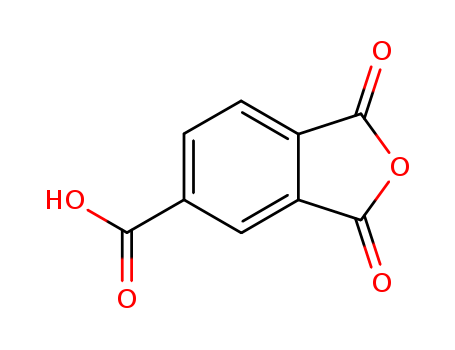|
Description |
Bortezomib, a modified dipeptidyl boronic acid, is a therapeutic proteasome inhibitors used for the treatment of cancers. It is indicated for the treatment of relapsed multiple myeloma and mantle cell lymphoma. It is capable of inhibiting the mammalian 26S proteasome, which is important in regulating the intracellular concentration of specific proteins to maintain homeostasis within cells. The disruption of 26S proteasome function disrupts normal cellular homeostasis, leading to cytotoxic effect on various kinds of cancer cells. |
|
Drug for Cancer treatment |
Bortezomib is a drug for treatment of hematopoietic malignancies with the appearance being white or white-like crystalline powder. It is easily soluble in dimethyl sulfoxide, ethanol, but insoluble in aqueous solution. This product is the reversible inhibitor of the mammal cell 26S proteasome chymotrypsin-like activity. 26S proteasome is a large protein complex which can degrade ubiquitin. Ubiquitin proteasome pathway plays an important role in regulation of the intracellular concentration of specific proteins in order to maintain the stability of the intracellular environment. Proteolytic affects intracellular multi-level signalling cascade. The disruption of the normal intracellular environment can lead to cell death while the inhibition of the 26S proteasome can prevent the hydrolysis of specific proteins. In vitro tests have proved bortezomib exhibits cytotoxicity to multiple types of cancer cells. The in vivo models of preclinical tumor have proved that bortezomib is capable of delaying the tumor growth of multiple myeloma which is suitable for the treatment of multiple myeloma.
The above information is edited by the Chemicalbook of Dai Xiongfeng. |
|
Description |
Bortezomib, a potent ubiquitin proteasome (26S) inhibitor (Ki=0.6 nM), was launched in the US as a treatment for multiple myeloma. This proteasome is required for the proteolytic degradation of the majority of cellular proteins and is present in all cells. It is required for the control of inflammatory processes, cell cycle regulation and gene expression and is a novel target in cancer treatment. Bortezomib is a N-acyl-pseudodipeptidyl boronic acid and formulated as a mannitol ester. Aldehyde containing peptides are also proteasome inhibitors, but lack chiral stability (racemization) and selectivity against other proteases including cysteine proteases. Replacement of the aldehyde moiety by a boronic acid avoids these shortcomings and provides some measure of selective proteasome inhibition relative to many other serine proteases. It is prepared by coupling the pinanediol ester of leucine boronic acid with N-tert-Bocphenylalanine utilizing O-(1H-benzotriazol-1-yl)-N,N,N′,N′-tetramethyluronium tetrafluoroborate (TBTU) as the coupling agent. The tert-Boc protecting group is then cleaved from the dipeptide and pyrazinecarboxylic acid is coupled to form the terminal amide. Hydrolysis of the boronate ester is accomplished via a two-phase transesterification procedure using isobutyl boronic acid and aqueous extraction. In a study of patients who had received at least two prior therapies and demonstrated disease progression on their most recent therapy, about twenty eight percent showed a response to bortezomib. The response lasted a median time of one year. Another trial in 54 patients with relapsed multiple myeloma showed similar responses. It is dosed intravenously at an exposure of 1.3 mg/m2/dose twice weekly for two weeks followed by a 10-day drug-holiday. At therapeutic doses, the plasma drug levels were reported to drop to near detection limits within minutes of intravenous dosing. Based upon an ex vivo proteasome activity assay using blood cells, the pharmacodynamic half-life ranged from 9 to 15 h in patients with advanced malignancies. |
|
Chemical Properties |
Yellow Solid |
|
Originator |
Millenium (LeukoSite, Proscript) (US) |
|
Uses |
Bortezomib is the first proteasome inhibitor to be approved b the US FDA for multiple myeloma, a blood cancer. A reversible inhibitor of the 26S proteasome-a barrel-shaped multiprotein particle found in the nucleus and cytosol of all eukaryotic cells. T |
|
Definition |
ChEBI: L-Phenylalaninamide substituted at the amide nitrogen by a 1-(dihydroxyboranyl)-3-methylbutyl group and at Nalpha by a pyrazin-2-ylcarbonyl group. It is a dipeptidyl boronic acid tha reversibly inhibits the 26S proteasome. |
|
Brand name |
Velcade (Millennium). |
|
General Description |
Proteasomes normally function to degrade proteins that areno longer needed by the cell. Such proteins are normallymarked by the addition of ubiquitin, a 76 amino acid proteinthat is added to the -amino group of lysine residues onthe target proteins. The marked proteins are then hydrolyzedby the large barrel-shaped proteasomes to givepeptides of 7 to 8 residues that may be further hydrolyzedand reutilized by the cell. This process serves to regulateprotein levels within the cell, remove defective proteins,and becomes important in maintaining normal signal transduction.Inhibition of the proteasomes results in the buildup of ubiquitylated proteins, which disrupts cell-signalingprocesses and cell growth. The signaling bytranscription factor NF-B (nuclear factor B) appears tobe especially sensitive to bortezomib. NF-B is associatedwith the transcription of antiapoptotic and proliferativegenes but is under the control of IB (inhibitor of NF-B).IB can itself be phosphorylated by IKK (IB kinase),which marks IB for ubiquitylation and destruction allowingNF-B to mediate its antiapoptotic and proliferative effects effects.In the presence of the competitive inhibitor bortezomib(IC50=0.6 nM), the 26S proteasome is inhibitedand the ubiquitylated IkB is still capable of inhibiting NF-kB, preventing its effects. |
|
Pharmaceutical Applications |
Bortezomib belong to the class of drugs called proteasome inhibitors and is licensed in the United States and the United Kingdom for the treatment of multiple myeloma. The drug has been licensed for patients in whom the myeloma has progressed despite prior treatment or where a bone marrow transplant is not possible or was not successful. It is marketed under the name Velcade or Cytomib . Velcade is administered via injection and is sold as powder for reconstitution.
Bortezomib was the first drug approved in the new drug class of proteasome inhibitors and boron seems to be its active element. For the mode of action, it is believed that the boron atom binds with high affinity and specificity to the catalytic site of 26S proteasome and inhibits its action. Therapy with Bortezomib can lead to a variety of adverse reactions, including peripheral neuropathy, myelosuppression, renal impairment and gastrointestinal (GI) disturbances together with changes in taste. Nevertheless, the side effects are in most cases less severe than with alternative treatment options such as bone marrow transplantation. |
|
Enzyme inhibitor |
This FDA-approved alkyl boronate drug for relapsed multiple myeloma (FW = 384.24 g/mol; CAS 179324-69-7; Solubility: 75 mg/mL DMSO; <1 mg/mL Water), also known as PS-341, Velcade, and [(1R)-3-methyl-1- ({(2S)-3-phenyl-2-[(pyrazin-ylcarbonyl)amino]propanoyl}amino)butyl] boronic acid, is a potent proteasome inhibitor, Ki = 0.6 nM. Mechanism of Action: Bortezomib is an N-protected dipeptide and can be written as Pyz- Phe-boroLeu, where Pyz- is pyrazinoic acid, Phe is phenylalanine, and the last residue is a leucine analogue with a boronic acid in place of a carboxylic acid. It is the sp3 orbital hybridization of the boronate that is thought to mimic a tetrahedral reaction intermediate, thereby conferring high-affinity binding (Ki = 0.6 nM). Pharmacodynamics: Bortezomib-mediated 26S proteasome inhibition causes cell-cycle arrest and induces apoptosis in CD- 30+ anaplastic large cell lymphoma. Bortezomib-treated cells form aggregates of ubiquitin-conjugated proteins (“aggresomes”) in vitro and in vivo, resulting in apoptosis. Bortezomib reverses defective G-CSF-triggered granulocytic differentiation of CD34+ cells from CN patients in vitro, an effect that was accompanied by restoration of Lymphoid Enhancer-binding Factor-1 (LEF-1) protein levels and LEF-1 mRNA autoregulation. This inhibitory effect helped to define a novel mechanism of LEF-1 downregulation in CN patients via enhanced LEF-1 protein ubiquitination and degradation by hyperactivated Signal Transducer/Activator of Transcription- 5 (STAT5). Bortezomib is currently used to eliminate malignant plasma cells in multiple myeloma patients. It is also effective in depleting both alloreactive plasma cells in acute Ab-mediated transplant rejection and their autoreactive counterparts in animal models of lupus and myasthenia gravis (MG). Significantly, bortezomib (at 10 nM or higher) kills long-lived plasma cells in cultured thymus cells from nine early-onset MG patients, consistently halting their spontaneous production of autoantibodies against the acetylcholine receptor, but also of total IgG. Bortezomib appears to be a promising treatment for MG and possibly other Ab-mediated autoimmune or allergic disorders, especially when given in short courses at modest doses before the standard immunosuppressive drugs have taken effect. |








